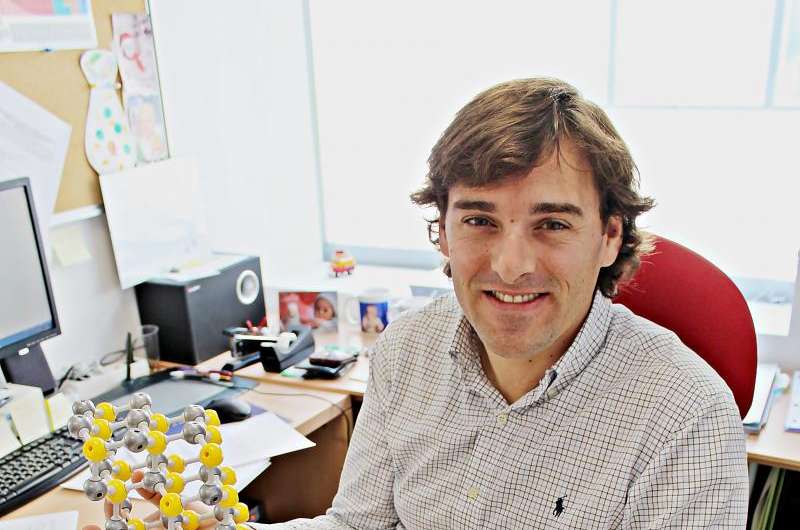Pioneering study may explain the origin of several digestive diseases

There are numerous studies related to the absorption of nutrients from the stomach since understanding what happens in our digestive system is crucial, for example, in order to be able to avoid certain diseases. In the UK, a group of researchers from the Medical Research Council, led by Professor Dr. Jonathan J. Powell, has published an article entitled 'An endogenous nanomineral chaperones luminal antigen and peptidoglycan to intestinal immune cells' has been published in the latest edition of the prestigious journal Nature Nanotechnology.
In this article, the formation of calcium phosphate in the stomach, its function and its direct relationship with the immune system are analysed from an innovative perspective. The origin of determined digestive diseases such as ulcerative colitis or Crohn's disease is explained, opening up a new line of research that, in the long term, could result in a drug to alleviate the effects of these diseases.
But what is an expert in the structure and chemistry of nanomaterials doing in a study like this? And what has he contributed? In order to better understand the role played by the UCA researcher, it is necessary to explain that scientists from the University of Cambridge also participated in this study, and that these are former colleagues of Doctor Hernández Garrido as he worked at this prestigious institution for several years.
Furthermore, the University of Cadiz is an international reference point in electronic microscopy and there are very few experts in the tridimensional characterization of materials using electronic microscopy, an area in which Juan Carlos Hernández is a specialist.
"Up until now, we had always worked on the analysis of nutrients of biomineral origin using conventional techniques that provided two dimensional images or planes of these particles, something that at this point was insufficient. Objects in nature are three-dimensional; nowadays if you want to characterize an object, you have to do so keeping as closely as possible to its actual morphology, its real shape, its size, its geometry… and to do this, you must use a three-dimensional characterization because the structure, the properties and the functions of these objects are all inter-related. That is to say, if you know the structure of something, you can understand its properties and you can understand its functions," explains Doctor Hernández.
"I decided to accept this challenge. They needed a three-dimensional characterization and I was in a position to provide one, although I had never done this with particles of biological origin before I took on this work."
It took several years to carry out this 3D analysis and the results were highly significant. The researchers were able to observe a mineralization effect in which the calcium and phosphorous ions joined together in the stomach to form calcium phosphate, something that was not new. What was truly new was that this three-dimensional visualization "revealed in high resolution that what had been seen in a conventional image and that we had interpreted as a dense, compact particle, was, in fact, a particle with many small cavities—that is to say, it had a highly porous internal structure".
The most interesting thing about this point is that "by demonstrating that these particles are highly porous, we are opening up the possibility that, during their formation from the joining of calcium and phosphorus ions, various antigens could become trapped in their interior. In fact, we already knew, from work by other researchers, that these calcium phosphate particles are consumed by immune system cells via the lymphoid tissue that lines the intestines. In this way, the particle itself is acting as a kind of transporter or carrier to what is known as the intestinal epithelium, the lumen, which is where there is a structure that allows the absorption of nutrients. That is to say, the calcium phosphate traps antigens (and certain other macromolecules such as proteins) and takes them to this part of the intestine, which means that these biominerals not only help in the absorption of nutrients but that they are also antigen transporters, and are therefore key in the creation of an immunological effect that we had been unable to see until now," says Juan Carlos Hernández.
Thus, at the University of Cadiz, "we have focused on showing the real structure and morphology of these biominerals, something that up until now, had only been suspected". This being the case, on understanding and proving the real structure of these particles, their function focusing on transferring nutrients and in turn aiding in their absorption was confirmed, which in turn led scientists to carry out a series of tests on mice that determined that "an imbalance of phosphorous and calcium can cause an incorrect or deficient absorption of nutrients. That is to say, if there is a calcium deficiency, for example, not enough calcium phosphate could be generated, or if it did not have the correct structure, we would not be able to transfer antigens to the intestinal epithelium and consequently we would lower our defence mechanisms in the intestine which could explain the origin of determined inflammatory intestinal diseases such as ulcerative colitis or Crohn's disease".
This study has succeeded in taking one more step towards discovering the origin of certain diseases, although there is still a lot of work ahead before we can combat these diseases that would appear to be associated with a calcium deficiency.
More information: "An endogenous nanomineral chaperones luminal antigen and peptidoglycan to intestinal immune cells." Nature Nanotechnology. (2015) DOI: 10.1038/nnano.2015.19

















